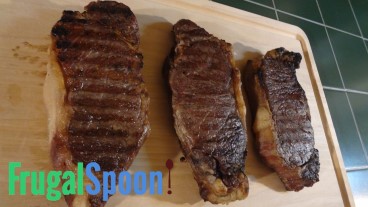Homemade Salt Dry-Aged NY Strip Steak
Published: July 14, 2021, by Ivan
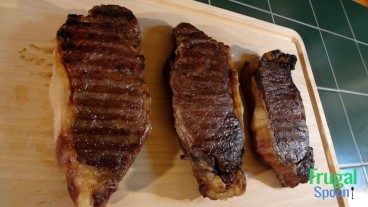
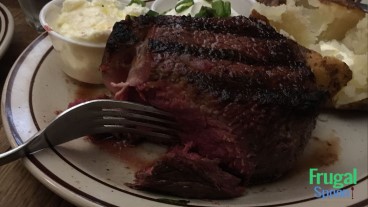
We are using salt, and dry aging to make some fantastic steaks. I love steak in all the countless ways you can prepare it. But by far my favorite is dry-age beef. Dry-aged beef is very tender, but more importantly very, very tasty and very, very juicy.

Aged beef at a steakhouse is expensive, but you can create that same flavor at home.
INGREDIENTS
1 NY Strip Steak or any thick beef sliced into thick steaks
1/2 Tbsp Kosher Salt
See Below: A tip to getting started into salted dry-aging of steaks.
How to make Salt Dry-aged NY Strip Steak

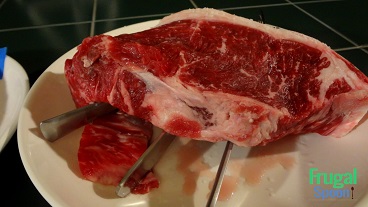
Dry aging can vary by those who prepare the meat. Some people dry-age beef between 20-60 days. That’s crazy, but crazy good. But also crazy expensive. In dry-aging, the beef is aged in a temperature and humidity controlled environment. The aging process causes the beef to tenderize and lose moisture intensifying the beef flavor. Overall, the beef loses a lot of mass during this process, so you end up with less meat, and a higher cost per pound.
Why salt and dry-age the steak? It expensive, but the savory beefy flavor intensifies and the meat becomes very tender. The ratio of moisture to mass in the steak still creates a very, very juicy steak that is tender but has more beef flavor.

I use Kosher Salt because it has half the saltiness of regular salt and is cheaper than sea salt. Reduce the salt in this recipe by half if you use sea salt or table salt. The cold refrigerator will age the beef and break down proteins and make the steak more tender. The salt will pull out the moisture, but eventually, the steak will turn around and try to pull the moisture back into the steak due to osmosis and absorb the salt with it making the steak tastier inside. If too much salt is not to your pallet then you can reduce the salt, reduce the aging time, or simply dab off salt from meat during the aging process. Everyone has different tastes so adapt and modify any recipe. You can salt a steak as you cook or eat it but you can only make your steak only as tender as the cut of beef you have cooked.
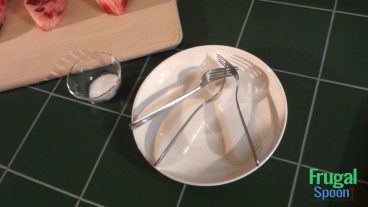
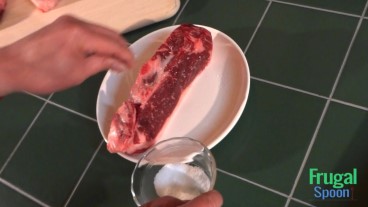
Use a baking pan with a rack for the dry-age process. If you do not have a baking pan and rack then use a plate with 3 forks. Wedge the prongs on the three forks together and spread the forks to make a rack on the plate.
Salt the steak with a 1/2 tablespoon of Kosher Salt on all sides of the steak. Some steaks need more salt or less salt due to their surface area and thickness. This recipe works well for steaks up to 2 inches thick and weight one pound. You just want to have good coverage of Kosher Salt on the steak. What salt sticks to the steak is good enough. Try not to pack the salt onto the steak. Place the steak on your rack.

The steak needs to be exposed to the cold dry air from the refrigerator, but we want to protect the steak. Use three tooth picks and insert one at each end of the steak and the third in the middle. The toothpicks will be the poles for a little tent. Use one-half sheet of paper towel and folding it to cover the steak. Every 6 hours or so check the meat for pooling liquid. Opening the fridge isn’t bad for the meat, except for the change of temperature, which you want to keep constant around 35 degrees. But opening the refrigerator will let some of that funky smell out of the fridge as the meat ages. The smell is usually during the first 24-36 hours. Dab out any fluid out of the container with a paper towel, and then change the top paper towel. Many times you wont see any juices at all, then you know the cold air is really drying the meat. The dry-aged beef should have no bad smell and begin to turn a ruby red color as it ages after 36 hours.
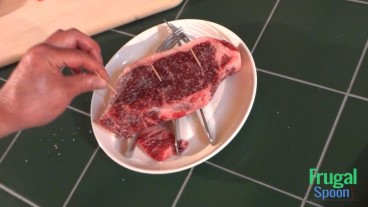
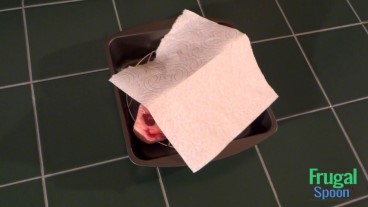
The little tent will still allow cold dry air to make its way to the steak, but keep other stuff in the fridge from falling directly on the steak. Try re-using a plastic cake or muffin container to dry the steak. Create holes large enough to allow air to circulate on the sides of the container. Experiment and see what works for you.

A tip to getting started into salted dry-aging of steaks.

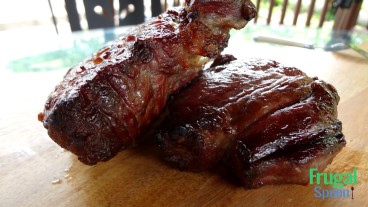
Use a large thick cut of beef chuck. Beef chuck is tasty and not too expensive. Use one tablespoon of kosher salt to cover beef chuck. Allow the steak to age twenty-four hours, then slice a thick piece, then cook it. Taste it. Add a few pinches of kosher salt to the cut portion of the beef chuck and let it age another day. Taste it again. Repeat the process and eventually, you will find an aging time that works for you. I have aged beef chuck up to five days, but that was only because there was nothing left to age.

The beef chuck was super tender, juicy, and very tasty. A great item to serve at parties. See our YouTube video “5 Day Salt Dry-aged Beef Chuck Tasting.”
Cooking
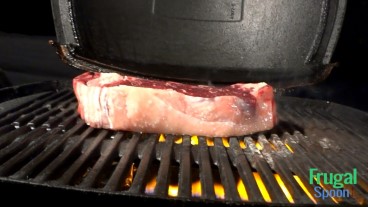
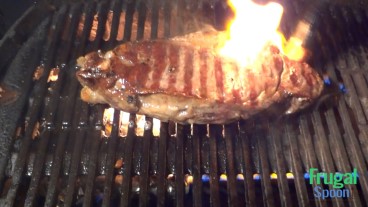
Remove the steak from the refrigerator and allow the steak to rest at room temperature for at least twenty minutes. This will allow the interior of the steak to warm up, otherwise, you may overcook the outside of the steak and the inside will be cold.

Cook your steak on high heat as you prefer. A rare steak feels like your relaxed palm muscle. A medium steak feels like your relaxed forearm muscle three inches from your inside wrist. A well-done steak feels like your wrist next to your palm. Baste the steaks with butter, minced garlic, and dried parsley. Cover the steak with tinfoil after cooking and allow the steaks to rest for 5-8 minutes. The resting period allows the steak to retain its moisture. This will keep the steak juicy and warm. The steaks will typically push out clear or slightly reddish juices during the resting period. Keep in mind that you can always cook a steak more, but you can’t cook it less.
Thanks for stopping by. I hope you enjoy your own Salted Dry-Aged NY Strip Steaks. Remember to share your recipes.
Until next time. Adios…Beef
Click Below to Watch the Full Video Tutorial on Youtube
Contact Us
Contact
Let's chat!
Need more information? Send me an email or drop me a line.
- Ivan@FrugalSpoon.com
- Mail: 127 E Locust St #91, Fairbury, Il. 61739

